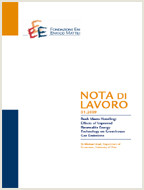Productivity and Firm Selection: Quantifying the “New” Gains from Trade

25.11.2009
Gregory Corcos, Massimo Del Gatto, Giordano Mion, Gianmarco I.P. Ottaviano
F12, R13
European Integration, Firm-level Data, Firm Selection, Gains from Trade, Total Factor Productivity
Economy and Society
Giuseppe Sammarco
We discuss how standard computable equilibrium models of trade policy can be enriched with selection effects without missing other important channels of adjustment. This is achieved by estimating and simulating a partial equilibrium model that accounts for a number of real world effects of trade liberalisation: richer availability of product varieties; tougher competition and weaker market power of firms; better exploitation of economies of scale; and, of course, efficiency gains via the selection of the most efficient firms. The model is estimated on E.U. data and simulated in counterfactual scenarios that capture several dimensions of European integration. Simulations suggest that the gains from trade are much larger in the presence of selection effects. Even in a relatively integrated economy as the E.U., dismantling residual trade barriers would deliver relevant welfare gains stemming from lower production costs, smaller markups, lower prices, larger firm scale and richer product variety. We believe our analysis provides enough ground to support the inclusion of firm heterogeneity and selection effects in the standard toolkit of trade policy evaluation.
***
Suggested citation: Gregory Corcos, Massimo Del Gatto, Giordano Mion, Gianmarco I.P. Ottaviano, Productivity and Firm Selection: Quantifying the ‘New’ Gains from Trade, The Economic Journal, Volume 122, Issue 561, pages 754–798, June 2012, DOI: 10.1111/j.1468-0297.2011.02487.x
